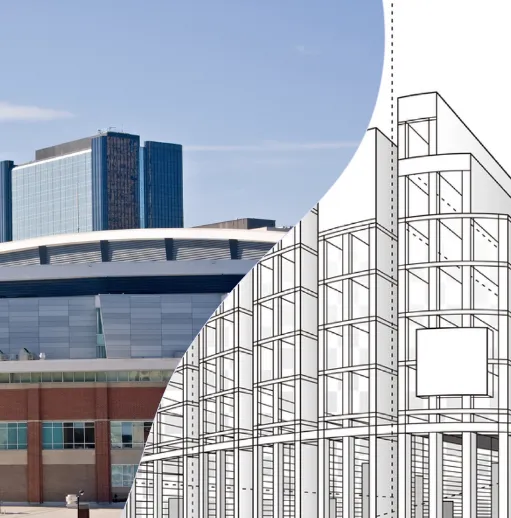
A maintenance emergency is when you need to complete unscheduled work right away to keep people and assets safe. Inaction isn’t an option, and in some cases everyone on the team drops what they’re doing to help, which erodes the maintenance department’s ability to achieve immediate and future goals. The solution is to prepare the right combination of processes and policies to avoid emergencies where possible and deal with them efficiently when necessary.
Why is emergency maintenance dangerous?
Because they didn’t have time to coordinate before getting started, technicians run higher risks of accidentally causing further damage. When a pipe bursts, for example, the team might bend or break surrounding plumbing trying to turn the water off. There’s also an increased risk of injury. With that same burst pipe example, the team might suffer electrical shock trying to work quickly without first putting on personal protection equipment or checking for active hazards.
Long-term, the more time it takes technicians to deal with an emergency, the further back they push planned and scheduled work. The emergency you deal with today might be putting you behind schedule on work you’d planned to complete next month.
What is an example of emergency maintenance?
For the maintenance team, “unplanned” is not the same as “emergency.”
Though this is a common misunderstanding, and the two do share some similarities, emergency maintenance includes events such as:
- Fires and flooding
- Outages of critical services
- A sewer line backing up into a unit or complex
- Air conditioning going out in extreme temperatures
- Elevators breaking down with people trapped inside
There are many causes of emergency maintenance, but the list of ways to avoid problems is relatively short: Make sure you have properly trained technicians and have established and easily shared plans in place.
How can you prevent emergency maintenance?
There will always be some emergencies, but there are ways to help make them rare and manageable. With the right policies and processes in place, you ensure you have fewer of them, and when they do happen, you can handle them effectively and efficiently.
To prevent emergencies, you need solid standard operating procedures (SOPs) for your planned and scheduled maintenance. There are different maintenance strategies, and you need to choose which best matches each of your assets, but in many cases, your best bet is preventive maintenance.
In addition to implementing a preventive maintenance plan:
- Train you team methodically and set up a system for keeping everyone up to date on industry best practices
- Use tools only as recommended by their manufacturers
- Have your checklists and procedures easy to access and understand for your technicians
- Make sure the workers who operate potentially dangerous and critical assets are knowledgeable on all aspects of the equipment, including safety procedures
With a modern unified maintenance management platform, you can automate planning, scheduling, assigning and tracking inspections and tasks. All your data is stored and updated across the board in the cloud, meaning no more easy-to-misplace paper lists or spreadsheets, and you won’t have to worry about your team looking at out-of-date work orders or plans.
Your team having access to these plans and tasks from anywhere, all the time helps give you the edge you need over your maintenance schedule and prevent emergency repairs to minimize risk and loss and extend the lifespan of your assets.
How can you prepare for emergency maintenance?
Here, the top priorities are health and safety. You can follow these four steps to prepare for emergency maintenance.
Determine your probable potential emergencies
Before you decide, you’ll need to know the difference between what an “emergency” and simply “urgent” maintenance looks like for you and your company. You must define this to your team as the two types of maintenance sometimes appear to overlap.
Emergencies happen fast and cause safety or health issues. They also cause major business disruptions, so they require your immediate, undivided attention. Regardless of when they happen, the maintenance team must jump into action. When a pipe bursts and starts flooding the office late Saturday night, you can’t wait until Monday morning to fix it.
Non-emergencies tend to develop over time and have worst-case scenarios that are unlikely to lead to immediate business disruptions. You can wait to fix them during regular business hours.
Defining what your emergencies are helps your company better maintain your assets and resources because it allows you to more accurately prioritize work.
Develop your emergency maintenance workflows
This is where you create a workflow of what to do when emergencies occur. The various ways to report, record, and process are:
Manual
When a worker reports an issue to someone in charge, the matter in question is evaluated, and a work order is generated. Members of the maintenance team must monitor the work order from start to finish, in many cases handing pieces of paper back and forth.
Asset management solution
Using facility management software helps the maintenance team record incidents, tasks, emergency maintenance and data so that you have access to and can analyze important data that helps you get an idea of how to prevent emergencies in the future and overall improvement. Implementing the software simplifies these processes for you because you don’t have to rely on unreliable spreadsheets and paper documents.
Outline emergency maintenance procedures
When you’ve defined your emergencies and have a system for sharing information when they happen, you need to make a list of which emergencies may occur and create procedures tailored to deal with them. That way, if one were ever to happen, your tech team already knows which steps to take.
Steps can include assessing the situation and damage, notifying the right person, and isolating the danger. Making the right information available for your team of what to do in these emergencies helps mitigate risk. Remember, the last thing you want is a member of your team trying to help but accidentally making things worse or putting themselves into even more danger.
Implement facility management software
Make sure all the hard work you put into planning is available right when the team needs it. With a modern facility management platform, facility and maintenance professionals have instant access to critical information as soon as they need it.
Modern asset management platforms can also help you with onboarding and ongoing training. For example, techs can review the material related to handing emergency maintenance whenever they have time or as part of a structured program.
You can also use the software to keep a record of employee safety training, for example certificates for safe handling of hazardous materials and Occupational Safety and Health Administration (OSHA) courses.
With the right planning, preparations, and proactive maintenance strategies, you can reduce the frequency and severity of emergency maintenance, protecting your people and the company assets and equipment.


